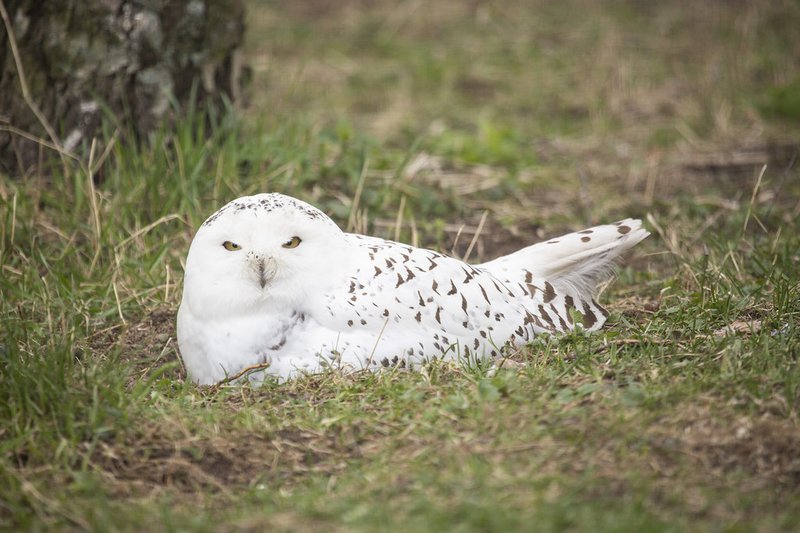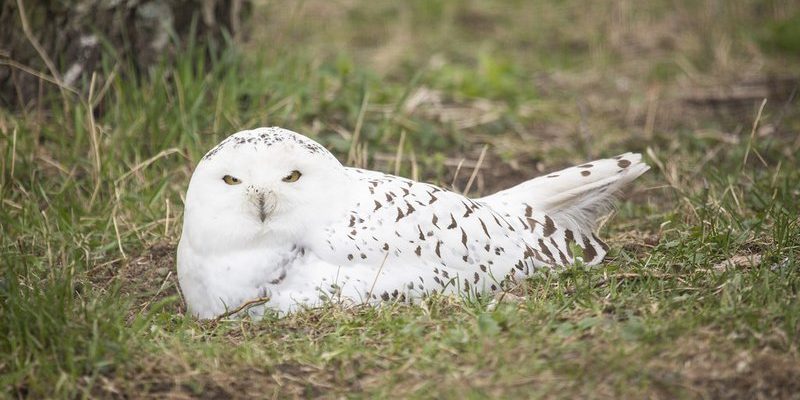
These incredible birds don’t nest just anywhere. They have specific preferences and habits that help ensure the survival of their young. So, if you’re curious about how snowy owls raise their families and navigate the challenges of their Arctic homes, you’re in for a treat. Let’s dive into the world of these snowy wonders and explore their nesting strategies, parental roles, and lifecycle.
Where Do Snowy Owls Nest?
Snowy owls predominantly inhabit the Arctic regions during the breeding season. Their nesting sites are typically found on the ground, often in open tundra or rocky areas where they can easily spot potential threats. Unlike many other birds, they don’t build a traditional nest. Instead, they create a simple depression in the ground, sometimes lined with a few feathers or grasses, which keeps their eggs safe and secure.
These chosen locations also depend on food availability, especially lemmings, which are a primary food source for snowy owls. You might be wondering why they nest in such exposed areas. Well, it gives them a strategic advantage. From these high vantage points, snowy owls can keep an eye on both their eggs and potential predators lurking nearby.
In addition to their natural instincts, snowy owls may also be influenced by the presence of other birds. For instance, they sometimes take over abandoned nests of other birds, which can provide a pre-made home for their chicks. This adaptability is a crucial survival skill in the harsh Arctic environment.
The Nesting Ritual
Once a snowy owl selects a suitable nesting site, the mating ritual begins. This stage is a fascinating dance of courtship. The male performs aerial displays to impress the female, soaring gracefully through the air and calling out with soft hoots. If the female is receptive, she’ll respond, and together they will establish a bond.
During this time, they will mate multiple times, which strengthens their connection. After successful mating, the female lays anywhere between 3 to 14 eggs, typically spaced a few days apart. The number of eggs often varies with food availability—more food means more eggs.
Once laid, the eggs are well-cared for. The female takes on the primary role of incubating them, while the male helps bring food to her. He’ll often hunt lemmings and other small prey to keep her well-fed, allowing her to focus on keeping the eggs warm and protected.
The Incubation Period
Incubation for snowy owls spans about 32 to 34 days. During this time, the female remains committed to her nest, rarely leaving except to eat or stretch her wings. Here’s the thing: this period is critical. The temperature in the Arctic can plummet, so the female must keep the eggs warm and safe from hungry predators.
As the days pass, the anticipation grows. You might be picturing the fluffy chicks developing inside those eggs, ready to break free into the world. As the incubation period nears its end, the female can start to hear the faint sounds of the chicks peeping from within their shells. When the moment arrives, it’s a celebration for the family.
Welcome to the World: Hatching
When the eggs finally hatch, usually over a span of just a few days, it’s a whirlwind of activity! The chicks, known as owlets, are born covered in downy feathers, but they’re helpless and completely dependent on their parents for food and care. The first few weeks are especially crucial; they must grow quickly to prepare for the challenges ahead.
The female continues to take charge, keeping the owlets warm and hidden from predators. The male plays an essential role as well, hunting for food and providing it to the family. Snowy owl parents are fantastic providers, often bringing back lemmings or other small rodents multiple times a day. You might imagine them swooping down into the snow, catching their prey with impressive skill.
As the owlets begin to grow, they start to develop their wing muscles and learn to maneuver their tiny bodies. This is a major milestone—it’s their first step toward becoming independent.
Growing Up: The Development of Owlets
As the weeks pass, the owlets’ fluffy down morphs into their adult feathers, and their personalities begin to shine. They grow curious and start to explore their surroundings under the protective watch of both parents. Here’s where things get exciting: baby snowy owls learn to hunt first by observing their parents, and then through practice.
You might notice that some owlets are more adventurous than others, often leading the charge into the snow. But here’s the catch—this exploration is risky. They must be cautious of predators like Arctic foxes or larger birds of prey. The parents respond by staying close, but it’s a balance between letting them explore and keeping them safe.
By the time they’re about 10 to 12 weeks old, the young owls begin to take their first flights. You can imagine the scene: fluffy, white figures flapping awkwardly but enthusiastically as they learn to navigate the wide-open Arctic skies. It’s a moment that marks their transition from nestlings to young, independent owls.
Independence and Leaving the Nest
After about 10 weeks, the young snowy owls are ready to leave the nest. However, independence doesn’t mean they’re on their own just yet. They’ll continue to rely on their parents, particularly the male, for food for several more weeks. It’s a sort of cooperative transition; while they learn to hunt for themselves, they still benefit from parental care.
Here’s an interesting fact: snowy owls may stay with their parents until the fall. During this time, the family group might remain together, especially in areas where food is abundant. This social structure is essential for survival in their harsh environment. Owlets learn crucial skills like hunting and territory recognition during this shared time.
Eventually, as winter approaches and food becomes scarcer, the young owls set out on their own. This journey can lead them far from their birthplace, sometimes venturing into new territories in search of food and a mate. It’s a wild and freeing experience, marking their entrance into the broader world of snowy owls.
The Challenges of Survival
While snowy owls have a fascinating lifecycle, survival is not a guarantee. Many factors can impact their survival rates, from climate changes to shifts in prey populations. For instance, if the lemming populations decline, it can significantly affect the number of eggs laid and the survival of the chicks. You might be surprised to learn that a snowy owl’s reproductive success is closely tied to the abundance of lemmings.
Additionally, habitat loss and human encroachment can pose threats to snowy owls. Their nesting sites may be disturbed, and their food sources can dwindle in the face of changing environments. It’s a reminder of the importance of protecting these stunning creatures and their habitats.
Snowy owls are also known to migrate. Depending on the food availability, they may move southward during harsh winters in search of more suitable conditions. Their adaptability is really a testament to their resilience in the face of change.
Snowy owls are truly remarkable birds with a lifecycle that showcases their incredible adaptations to some of the harshest environments on Earth. From their unique nesting habits to the delicate process of raising their young, each step is vital for their survival. Understanding these fascinating creatures gives us insights into the delicate balance of nature.
So, next time you see a snowy owl soaring through the sky, remember the intricate journey it took to thrive in the wild. These birds inspire a sense of wonder and respect for the natural world, reminding us of the beauty and complexity of life. Keep an eye out for them, and appreciate the unique role they play in our ecosystems. Their story is one worth sharing and protecting.

